Books are still great, no matter what happens on these here internets. They make much better references because the information stays where it is and is accompanied by indices and tables of contents. No link rot, no head scratching while trying to navigate a tag cloud, no wondering if the review was posted by the publisher or an actual reader (ie not the author’s mom, either). They do cost more than free-media (aka e-media?), unless you can find them at your library.
Here’s a start to a list of books you might consider buying if you’re interested in graphic design. Most social scientists might like to be better informed about graphics, but have a bit of trouble getting into it. Below are books that are compelling and beautiful. They won’t tell you how to run the software you might use or write clean html/css or insert hacks for working around the stupidity of IE6. I can post some of those another day, if you like. Our contexts IT guru Jon will be invited to guest blog on the topic of how to do online publishing, as well.
1. Edward Tufte
Tufte is widely regarded as a key figure in graphic design, especially the visual display of quantitative information (which is the title of one of his books). He also has a brilliant essay on powerpoint, of which he is not a fan.
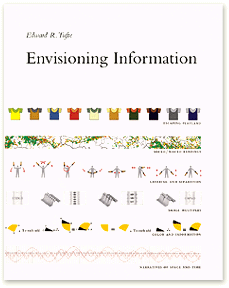
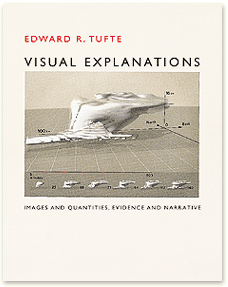
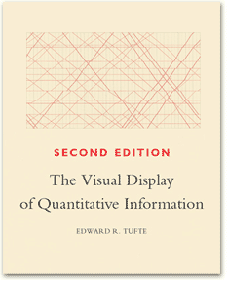

2. Typography
The Elements of Typographic Style by Robert Bringhurst review by Roy Johnson.

Typography is a critical component of graphic design. Font size is often the least flexible component and thus serves as a starting point for the rest of the design, assuming the design includes text. With respect to accessibility, small font sizes are terrible since many people have trouble with their eyes. (Even if only a few people had trouble with their eyes, designers should still make inclusive designs.) With respect to design, it is often better to have small fonts so that text blocks read as blocks rather than stripes. Reconciling those two and adhering to branding and identity strategies relies on a firm command of typography. Bringhurst’s book is recommended wide and far so I’m not saying anything new here.

Tobias Frere-Jones and his partner Jonathan Hoefler are current giants in the field of typography and have resources on their website – Hoefler & Frere-Jones. They have created typography for the White House, Gucci, the United Nations, Saatchi and Saatchi, Wieden + Kennedy, J. Walter Thompson, all the Martha Stewart magazines, Wired, The New York Times, The Washington Post, Apple, IBM, Sony, and on and on. They represent a sizable portion of the world of font development.
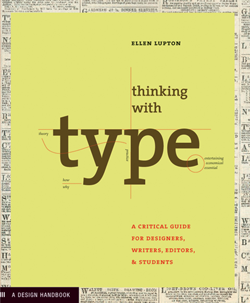
Ellen Lupton of Maryland Institute College of Art says/writes much worth hearing/reading, including typography. Her Thinking With Type has it’s own website with additional information. Cheaper than buying the book, but I still recommend owning books if you can afford them.
3. The Grid
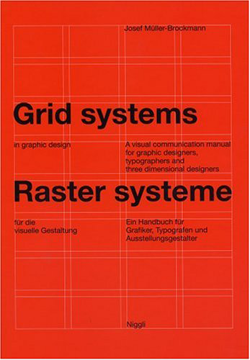
Grid Systems in Graphic Design (Josef Muller-Brockmann)
Muller-Brockmann’s book is a solid introduction to the grid as a design framework. It’s good to read if you know nothing about design and good to read if you need a refresher in the basics, before you slide down what can be a slippery Flash-driven rabbit hole into a world where nothing makes sense.
See also tutorialblog on the use of grid systems in web design.
4. Universal Principles of Design by William Lidwell, Kritina Holden and Jill Butler

This book is not just about graphic design, but is more, well, universal, as the title suggests. It’s organized alphabetically, with one page of explanation and one page of examples for each of the 100 principles they’ve chosen. They admit that there are more than 100 principles, but they had to cut it off somewhere. Included are the 80/20 rule (or pareto’s principle), the Fibonacci sequence, the golden ratio, the baby face principle, and so on. I was so fascinated by it that I couldn’t put it down.
5. 79 Short Essays on Design by Michael Beirut of Pentagram
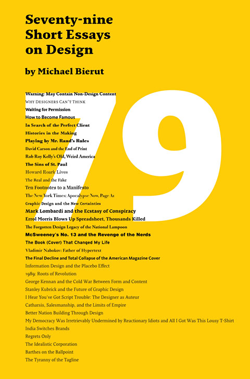
Michael Beirut is a towering figure in design, as is the company he works for, Pentagram. His little collection of essays includes some gems, though not all are equally worthy of recommendation. The book has been widely recommended by others; maybe they were more evenly impressed by the collection than I was. Good one for checking out of the library because all the essays go pretty quickly so it would be nice to read on the train.
6. Design Blog Recommendation #1
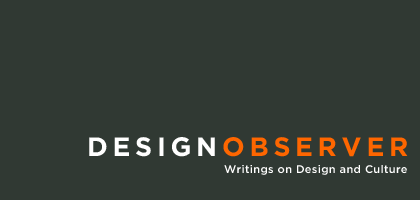
Design Observer and the related Winterhouse Institute (Jessica Helfand and Bill Drenttel)
This last one is a blog you might want to follow that features design related books, articles, entries, videos and so on. I am new to following it, but I like it so far.

Comments 8
Topics about Books » Graphic Sociology » Graphic Design Books — April 8, 2009
[...] flaneuse added an interesting post today on Graphic Sociology » Graphic Design BooksHere’s a small readingBooks are still great, no matter what happens on these here internets. They make much better references because the information stays where it is and is accompanied by indices and tables of contents. No link rot, no head scratching … [...]
Graphic Design » Graphic Sociology » Graphic Design Books — April 8, 2009
[...] The rest is here: Graphic Sociology » Graphic Design Books [...]
Graphic Sociology » Graphic Design Books | Computer Internet and Technology Articles. — April 8, 2009
[...] Read the original here: Graphic Sociology » Graphic Design Books [...]
Graphic Sociology » Graphic Design Books — April 8, 2009
[...] Read the original post: Graphic Sociology » Graphic Design Books [...]
books » Blog Archive » Graphic Sociology » Graphic Design Books — April 9, 2009
[...] the original post: Graphic Sociology » Graphic Desig... Share and [...]
mikehout — April 9, 2009
Essential for any list of this sort: Bill Cleveland's books on visualizing data. Visualizing Data (1993) and Elements of Graphing Data (1994), both published by Hobart Press, present a systematic approach to graphical displays that are informed by research into perception and guided by the principle that the data should be the most prominent part of any display.
Polk Centre Township, Pennington County, Minnesota » Víctor Neumann-Lara — May 7, 2009
[...] Graphic Design Books [...]
art courses — January 17, 2011
Well, books seem to be essential to many graphic designers and these books would be an asset to any graphic designers' library.